Forex was calm again last night as range trading has taken the place of longer-term position while the market waits for critical new data such US payrolls this Friday. DXY and EUR are trading places daily:
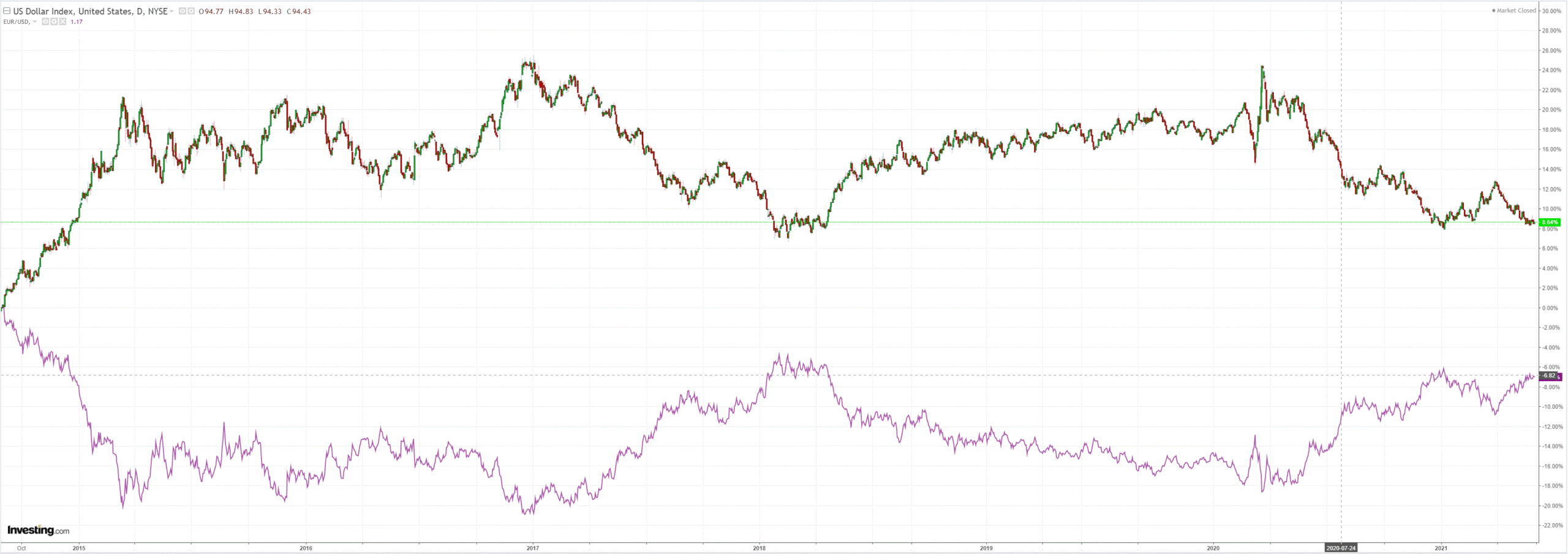
The Australian dollar trends against crosses are unchanged:
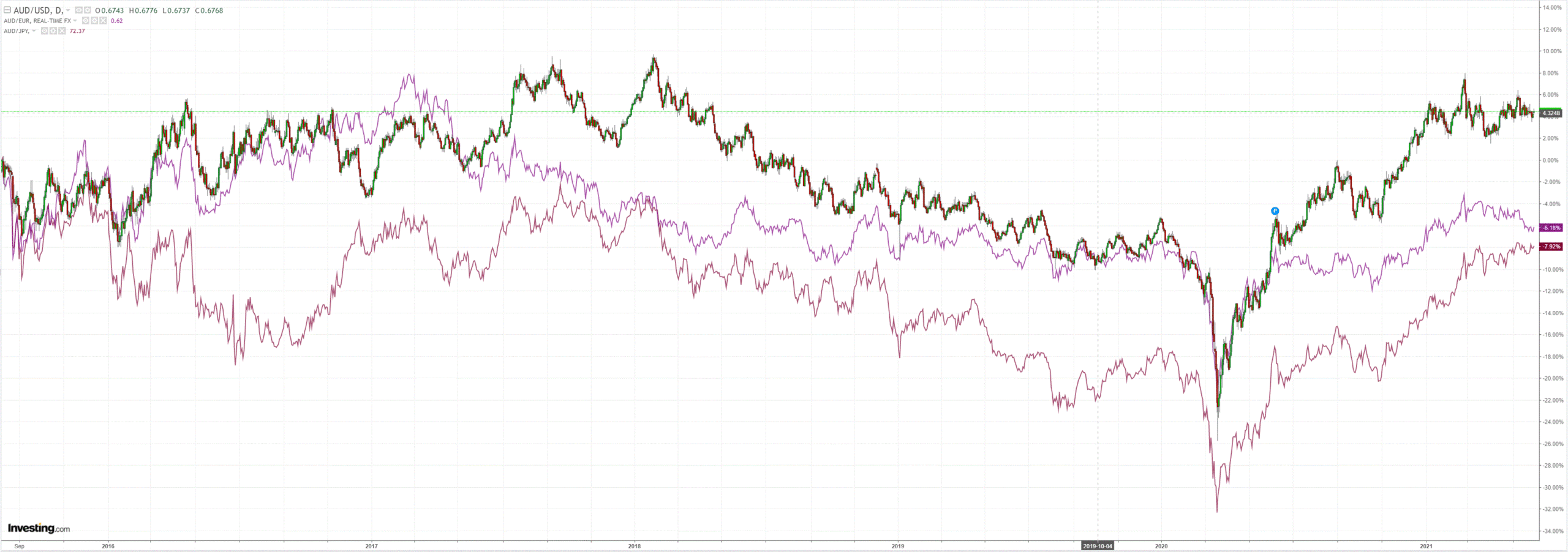
Oil is breaking out of its bullish pattern as OPEC plays its usual game:
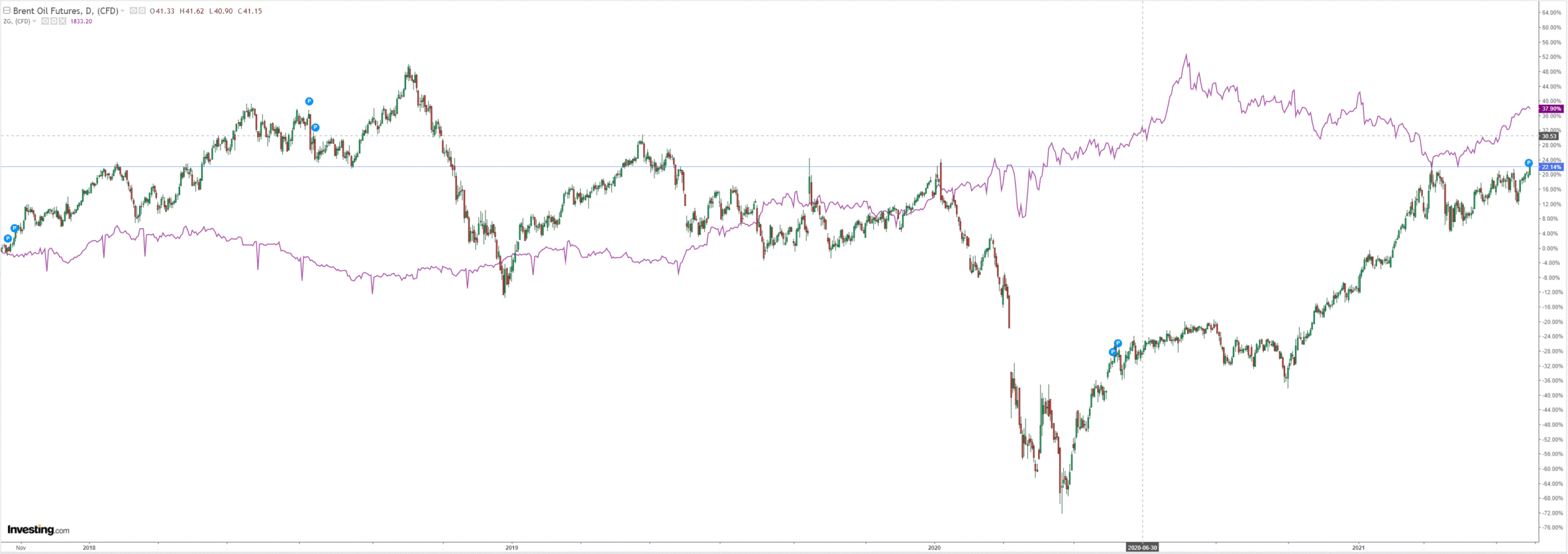
Base metals fell:
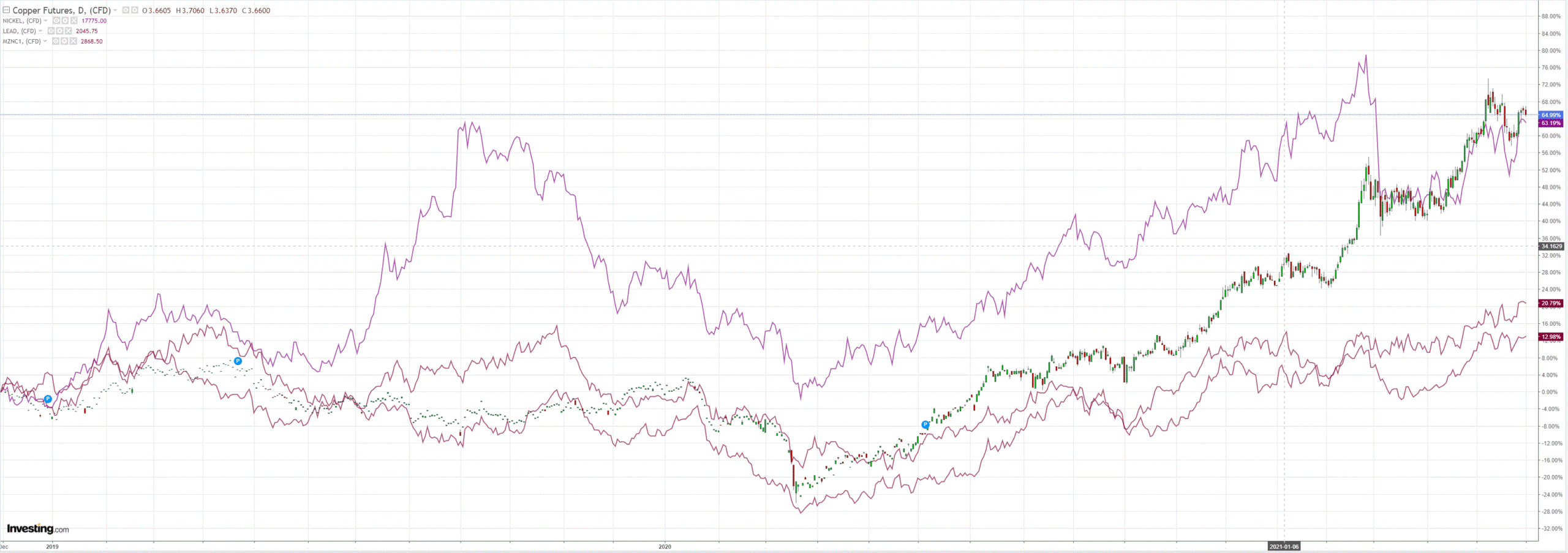
Big miners took off with iron ore:
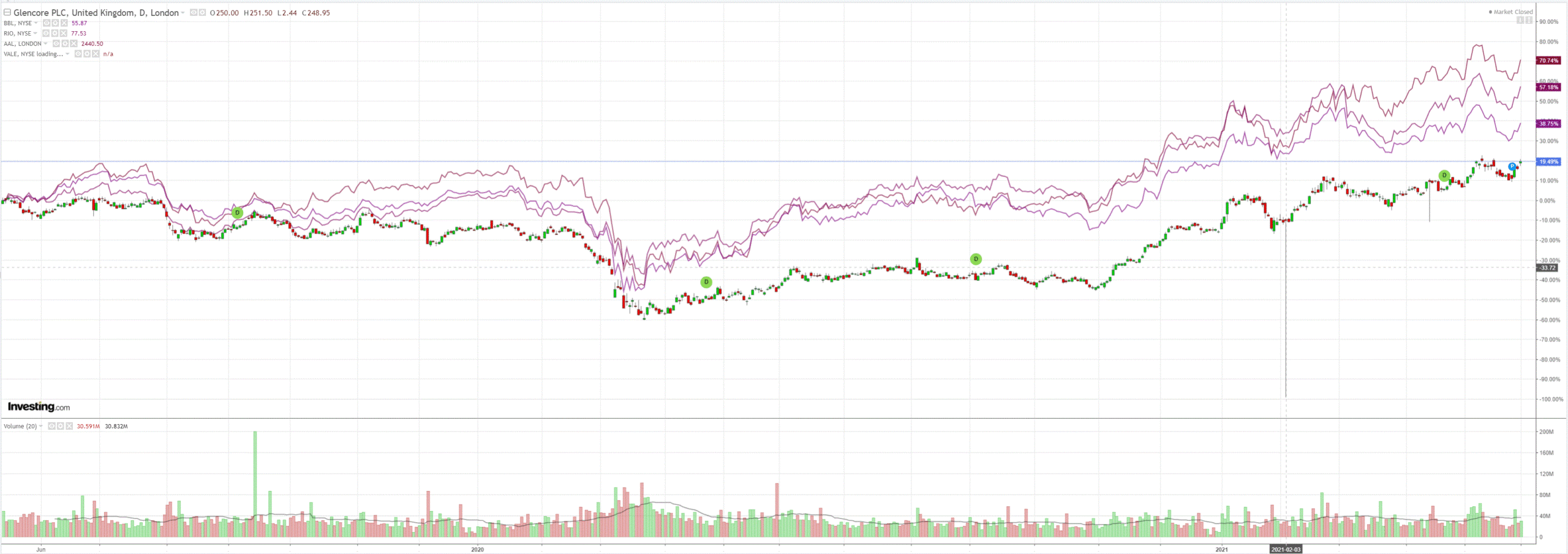
EM stocks boomed with Shanghai:
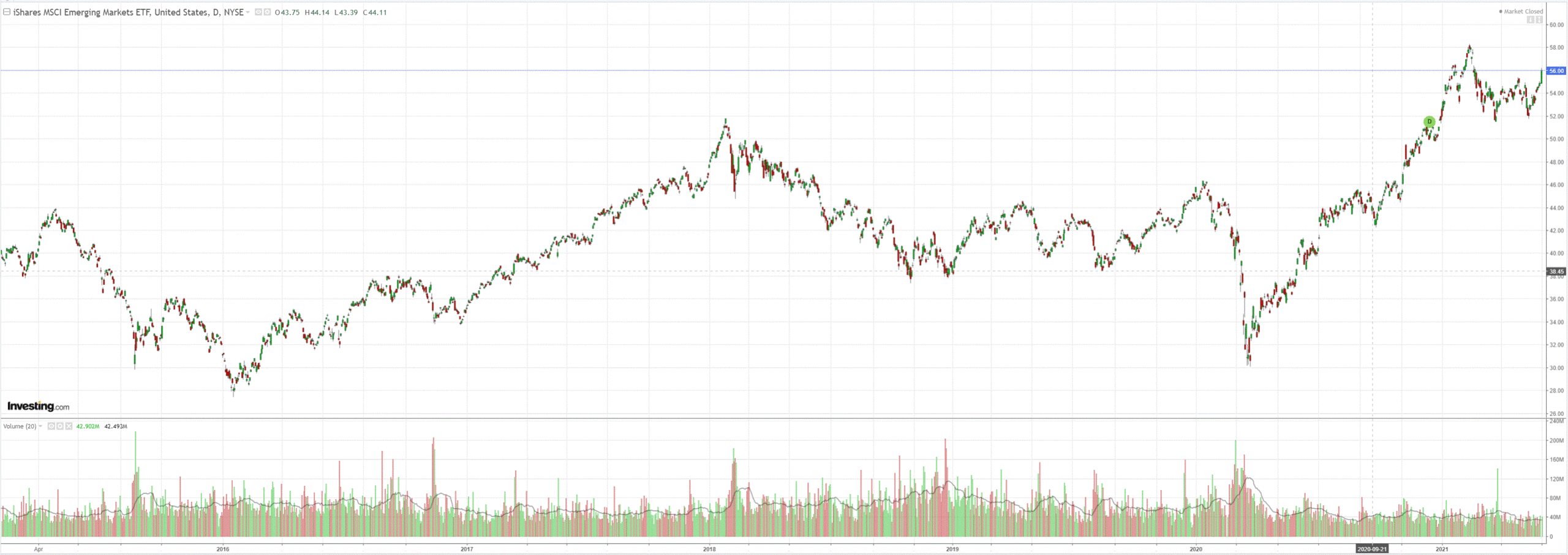
Oddly, EM junk went the other way:
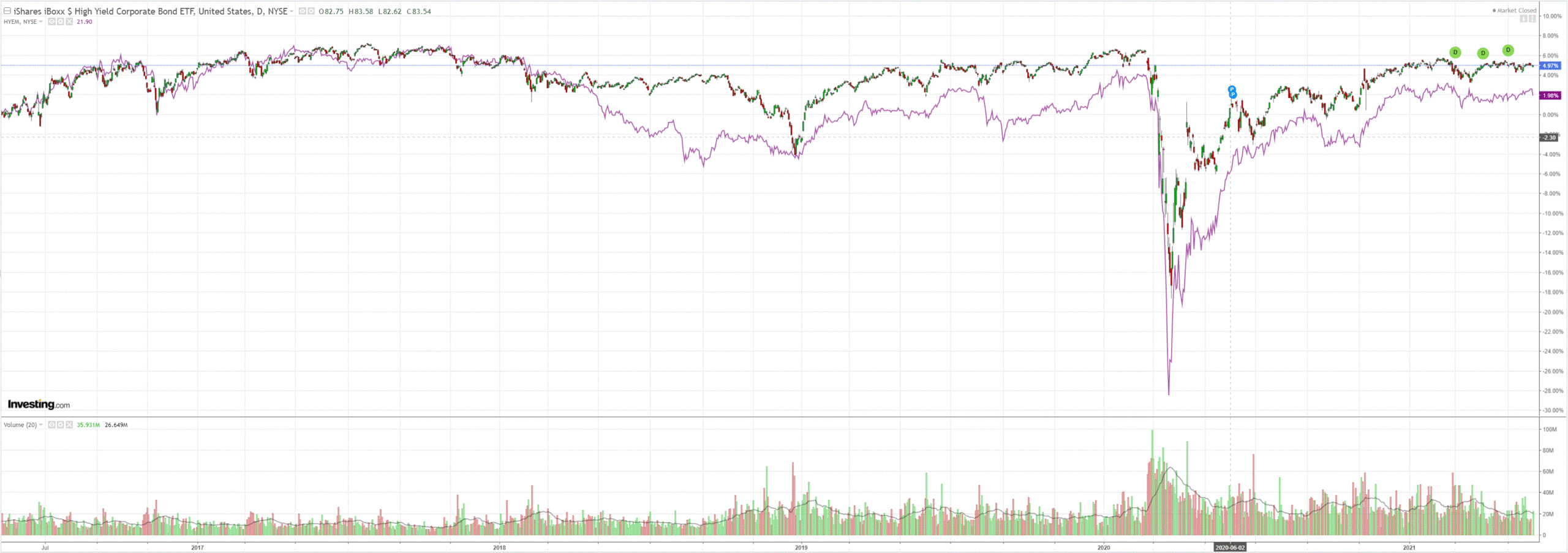
US yields are in a holding pattern:
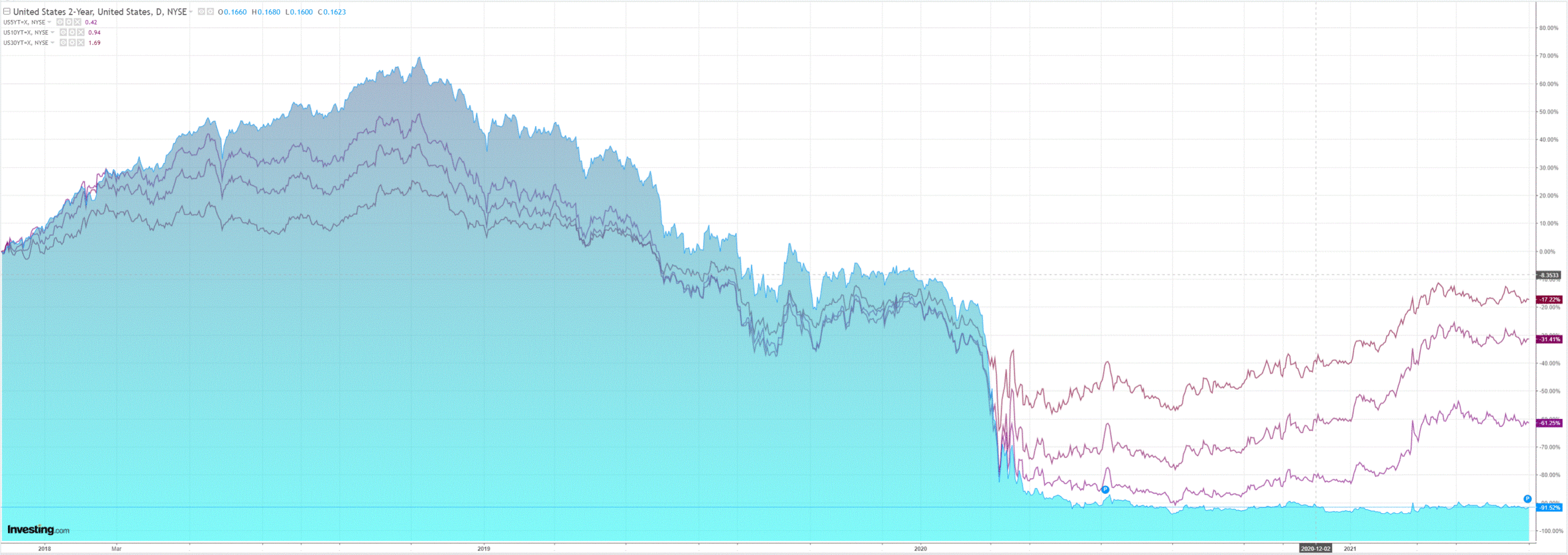
Same for stocks:
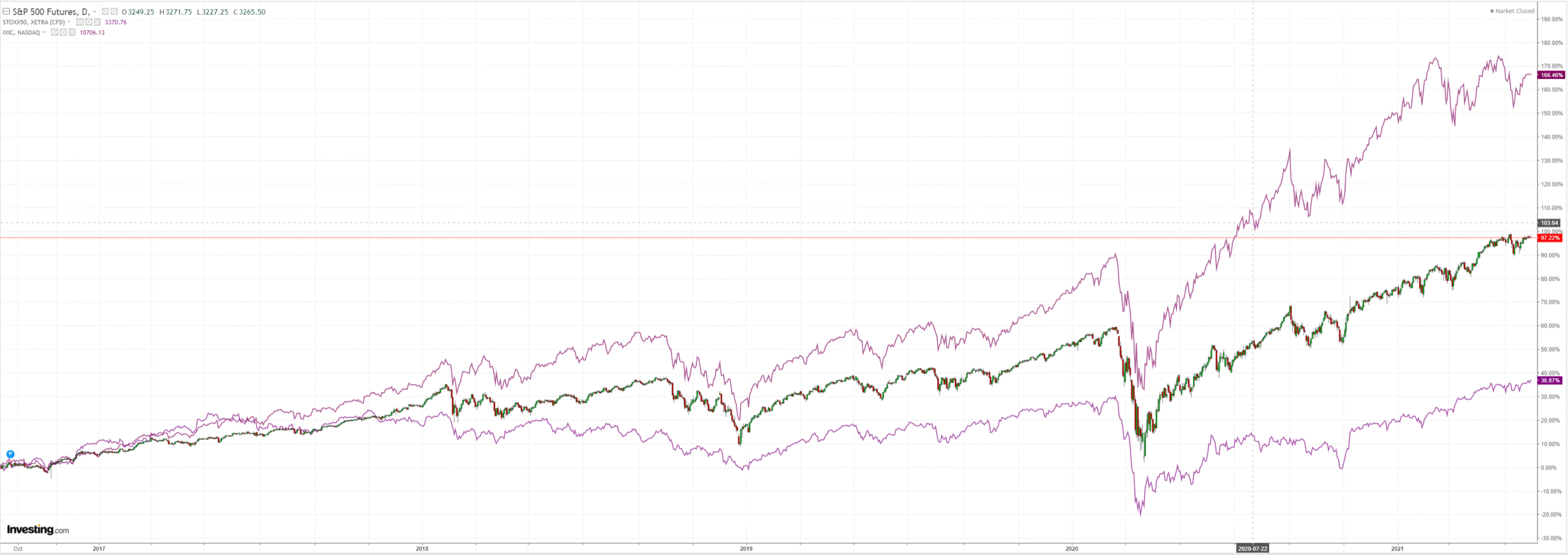
Westpac has the data:
Event Wrap
US ISM manufacturing survey in May rose further to 61.2 (prior 60.7, est. 60.9). That said, key components were mixed: there were falls in prices paid (88.0, prior 89.6) and employment (50.9, prior 55.1), but gains in new orders (67.0 from 64.3), new export orders (55.4 from 54.9), and backlogs (70.6 from 68.2).
Final May manufacturing PMI rose to a record high of 62.1 (flash 61.5), as output and new orders increased but supply chain issues remained high. The Dallas Fed manufacturing survey remained expansionary but fell to 34.9 from 37.2 (est. 36.3). Although business conditions improved, uncertainty increased and both production (fell from -18 to 15.7) and new orders (fell from -12.8 to 10.5) bucked trends in other surveys. Employment also remained expansionary but fell to 22.7 from 31.3.
Event Outlook
Australia: Our Q1 GDP forecast has been upgraded, to 1.6%qtr, 0.7%yr (market median is 0.6%, 1.5%). The risks to the forecasts are arguably tilted to the upside (potentially as high as a 1.9%) – we have a negative adjustment to allow for the apparent downside on Incomes. Key uncertainties and risks are around: services spending by consumers – to what extent was this hit by the snap lock-downs and the floods; as well as how GDP (income) and GDP (production) will print.
At 9:30am, the RBA’s Bradley Jones (Head of Economic Analysis) will give the keynote address at the Minerals Week Australia-Asia Investment Outlook in Canberra. At 7:00pm, RBA Deputy Governor Debelle and Michele Bullock, Assistant Governor (Financial System), will appear before the Senate Economics Legislation Committee (Estimates).
New Zealand: We are looking for the terms of trade to dip 0.5% over the March quarter. We expect that the surge in oil prices over the quarter (of circa 20%) will be enough to offset rising export prices. Also, the spike in dairy export prices will not be reflected in trade data until the June quarter.
Euro Area: The April PPI is expected to rise 0.9%mth, driven by the recent rise in commodity and energy prices. This will see the annual pace spike to 7.3%yr on base effects.
US: The Federal Reserve’s Beige Book will provide an update on conditions across the Fed districts. The FOMC’s Harker will speak, and Evans, Bostic & Kaplan will speak jointly.
Goldman tells us where we are:
USD: Stay short at low-end of post-2014 range; near-term outlook likely to pivot on payrolls. After appreciating in Q1 2020, the broad Dollar turned lower over the last two months, and major Dollar indices now sit close to the low end of their post-2014 ranges. Leadership of the Dollar sell-off has shifted over time, but recently has been led by the Chinese Yuan, which gained about 1% vs the greenback over the last week. We expect trend Dollar depreciation to continue, due to the currency’s high valuation, a long period of low nominal and real short-term interest rates, and increasingly competitive asset market returns overseas. Our current preferred expression remains long EUR/USD, due to the Euro’s domestic positives. Over the near-term the Dollar outlook will likely pivot on next Friday’s nonfarm payroll report. Fed communication on asset purchases has shifted slightly. For instance, San Francisco Fed President Daly saidTuesday that the central bank was “talking about talking about tapering”; at the press conference following the April 27-28 FOMC meeting, Fed Chair Powell had said that discussion was premature (“no, it is not time yet”). Openness to beginning the conversation on asset purchases (which will presumably take a few months), suggests incoming labor market data could affect expectations for the timing of tapering and eventual rate hikes. According to the New York Fed’s surveys of primary dealers and other market participants, consensus expectations are for tapering to begin in Q1 2022 (possibly announced in December 2021). On a stronger-than-expected employment report we could envision those expectations pulling forward, potentially stalling the Dollar sell-off, at least temporarily. On a weaker-than-expected employment report we would expect broad Dollar weakness to continue into at least mid-year.
I have no idea in the near term. China is slowing. The US will also slow from here. Europe is speeding up. EMs are cooked. We’re close to the peak in the global industrial rebound.
At this stage I prefer to look beyond the near-term mess to what we know comes after: US exceptionalism and Chinese lagging. Good for DXY. Bad for CNY and EUR. Bad for commodities. Bad for Australian dollar.
With that in mind I note that:
- PBOC has demanded banks hold more foreign currency reserves to weigh on CNY.
- PBOC is seeking curb CNY enthusiasm in markets as it hits its highest since 2016.
These are the kinds of moves we see near the top as hot money loses its head. China is going to slow sharply ahead. There is zero chance of yields lifting, indeed they are already falling. The renewed capital flows may be chasing stocks. Or both.
But CNY is a highly cyclical currency that follows the pattern of the Chinese credit impulse, along with all other things China: growth, commodities, yields etc.
The AUD follows along like clockwork:
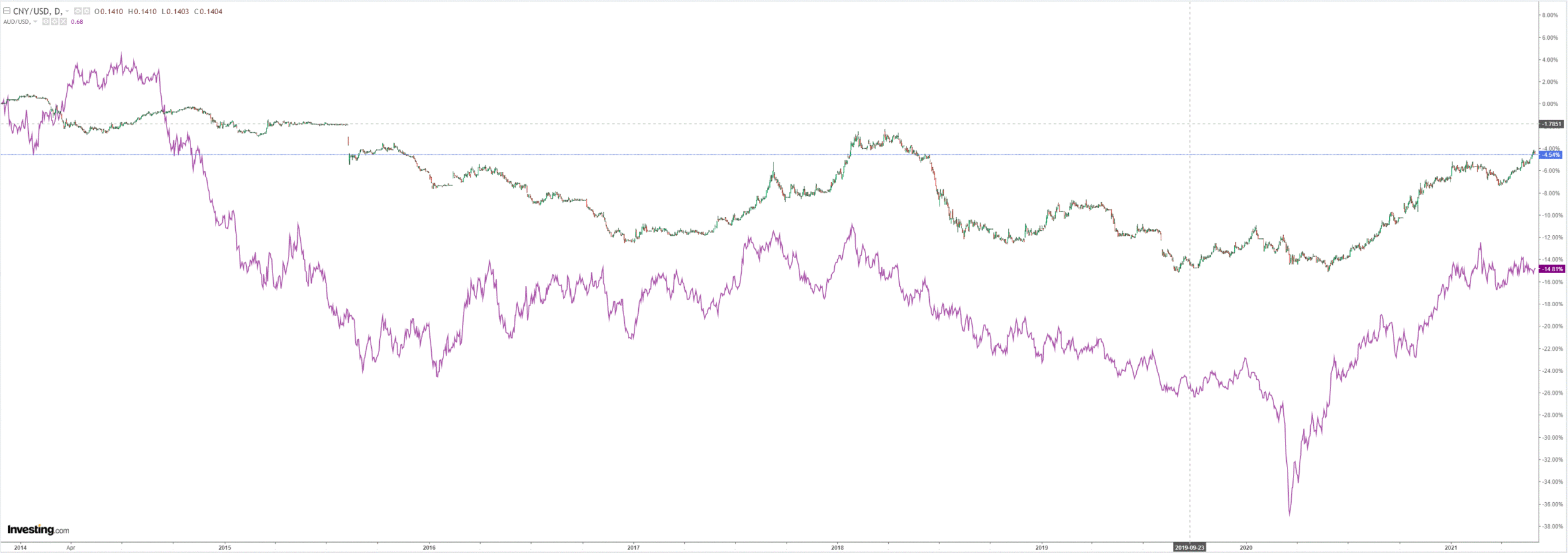
I expect CNY to roll over soon.

